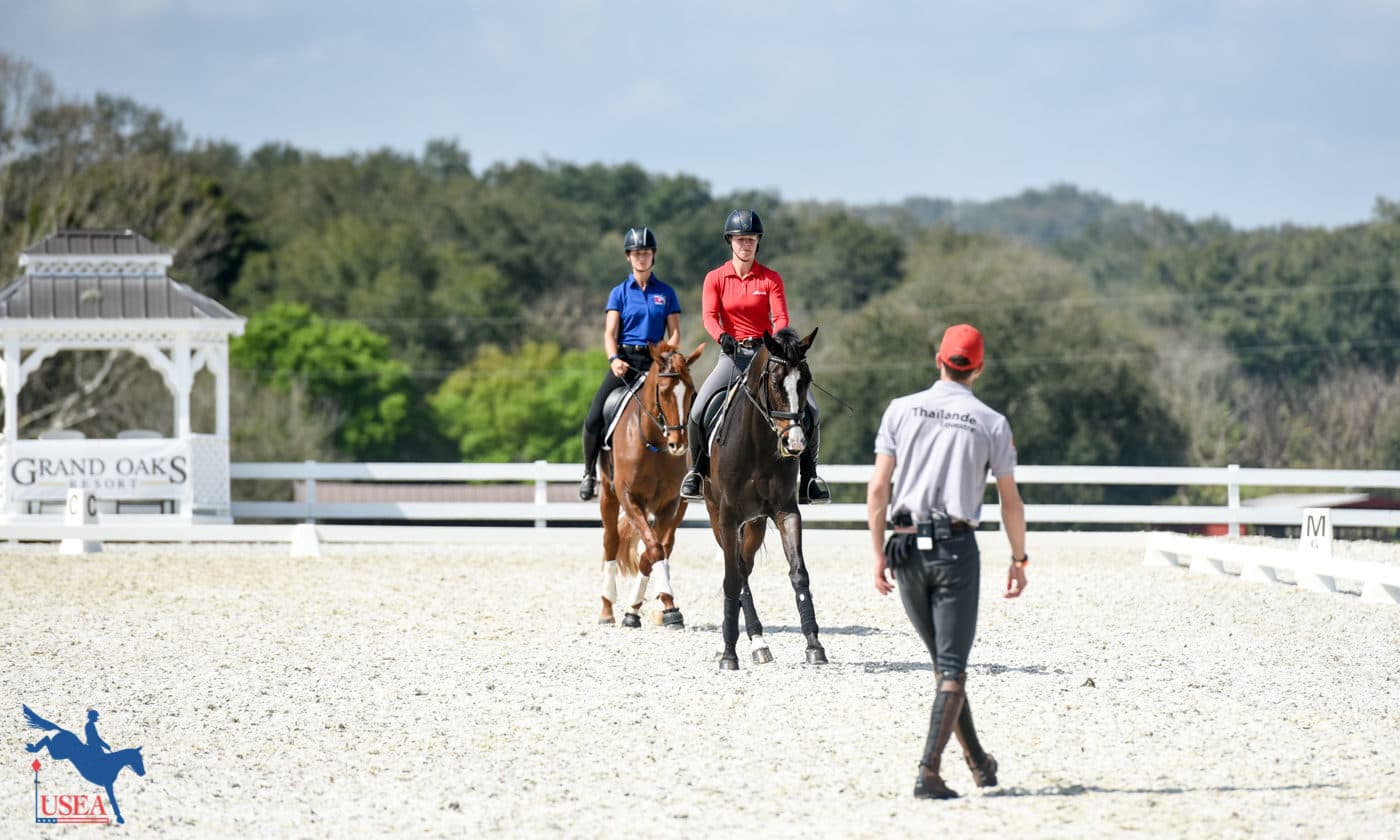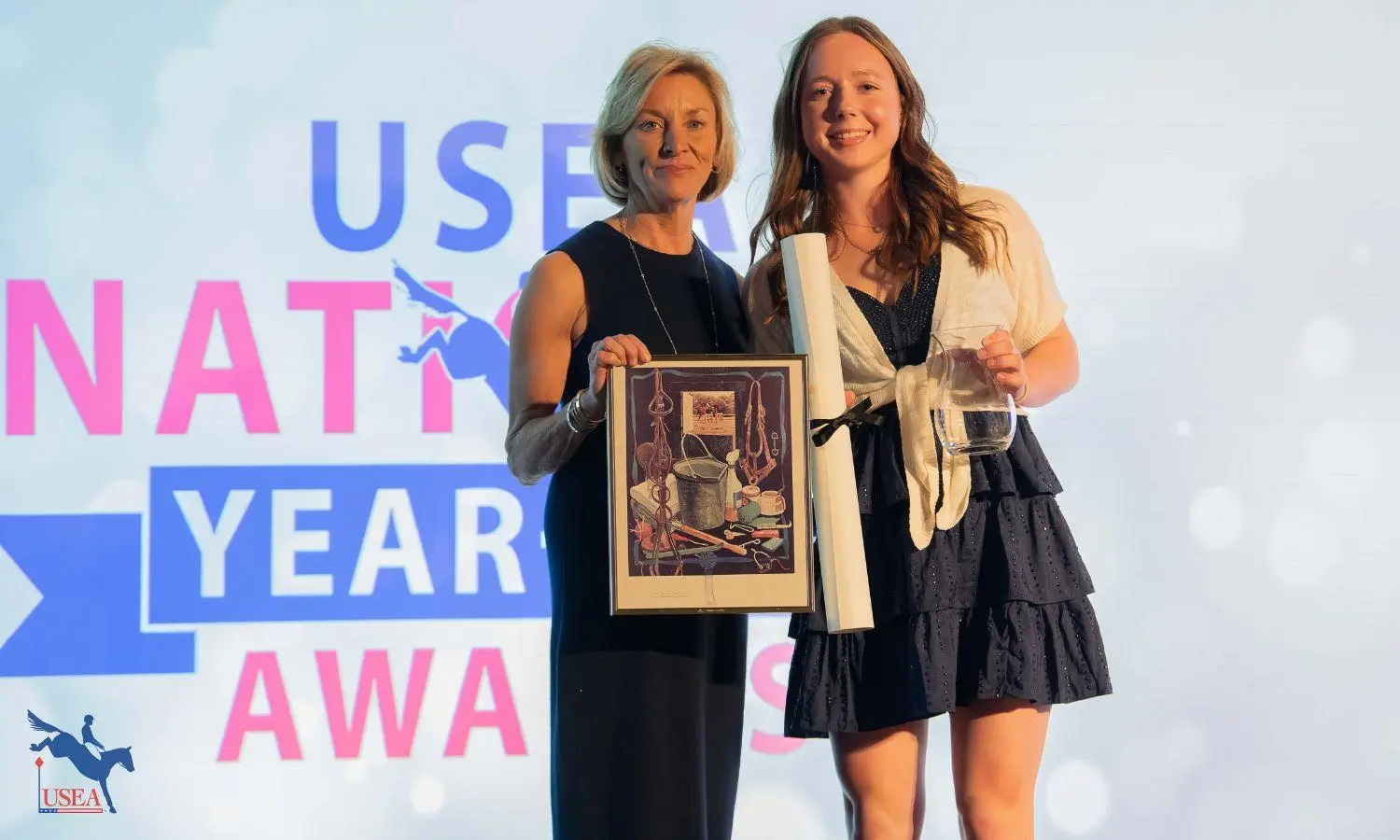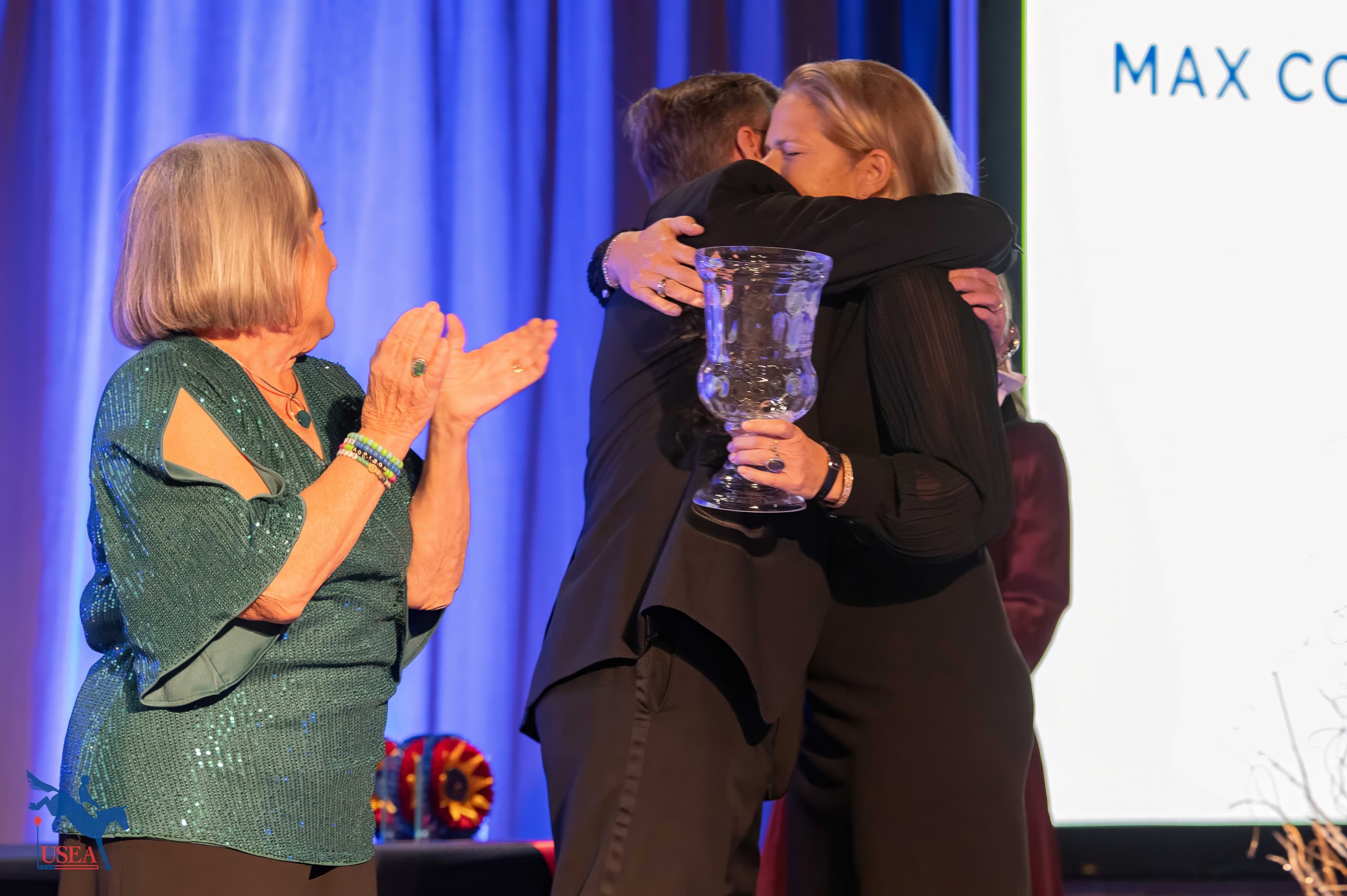Position, Balance, and Aids: Three Core Topics Covered in the USEA Eventing Handbook by the Levels

Whether you are a rider preparing for a move-up or a trainer looking to ensure your training program is well-rounded, the soon-to-be released USEA Eventing Handbook by the Levels is the go-to guide to assist you in navigating key decisions. Lucky enough, attendees of the 2022 USEA Instructors’ Certification Program (ICP) Symposium at Barnstaple South Farm in Ocala, Florida on February 8-9 will be the first people outside of the those involved in its creation to access this passion project that the ICP Committee has put two years of research and hard work into developing.
Three core requirements for each level outlined in the USEA Eventing Handbook by the Levels are position, balance, and aids. These topics are detailed at each level for each of the three phases of competition. To give you a better understanding of the critical information outlined within this guidebook, we have provided you with excerpts from the aids section for dressage at the Beginner Novice and Modified levels.
Beginner Novice Dressage Teaching and Rider Requirements: Position, Balance, and Aids
The following description represents the ideal goals for rider position and balance, which will remain as ongoing targets and should be reinforced and confirmed as the rider progresses through the levels.
Required at this level:
The instructor should confirm and strengthen all the elements of position, balance, and application of the aids as detailed under Starter Level Dressage Teaching Requirements.
A strong and secure position lays the foundation for a supple and independent seat, which enables the progression of the rider’s skill in riding and influencing their horse, without interfering with their horse. That progression at the Beginner Novice level should include:
- Developing the ability to follow the rhythm of the horse and control/maintain the balanced position in walk, rising trot, and canter, without using the reins and the horse’s mouth for balance.
- Understanding and beginning to implement the concept of riding the horse “in a corridor”, between leg and hand on both sides.
- Beginning to understand correct timing and positioning of the aids to effectively influence the horse.
- Increased understanding of how to use the outside aids for turning.
- Adjusting the stirrup length between dressage and jumping, as appropriate, to permit an elongated leg and deeper seat as the rider’s core strength, stability, and balance develops.
Additionally, riders at this level should:
- Understand and demonstrate the concept of bending the horse.
- Understand and demonstrate the aids for basic lateral movement.
- Continue work without stirrups in a controlled environment, as appropriate for the rider’s balance and ability, to develop increased security of the seat in walk, sitting trot, and canter.
Modified Dressage Teaching and Rider Requirements: Position, Balance, and Aids
Required at this level:
The instructor should confirm and strengthen all the elements of position, balance, and application of the aids as detailed under Starter through Training Level Dressage Teaching Requirements.
Rider position should be correct and effective through movements and transitions, including transitions within and between the gaits, and throughout the lateral work. This includes:
- Riding with increased strength of position, confidence, suppleness, security, rhythm, and balance, especially in the sitting trot.
- Developing increased depth of the seat, and the ability to use the seat and weight as a primary aid.
- Maintaining a correct and effective position while moving with the horse in a soft and supple way.
- Utilizing work without stirrups in level-appropriate exercises as a tool to support development of the rider’s independent seat and balance.
- With improved balance, independence, and suppleness, a more sophisticated ability to create and maintain an elastic connection and a more educated hand and arm.
Riders should demonstrate the coordinated use of independent aids, using the correct positioning and timing of the aids:
- Throughout all required movements, transitions between gaits and within the gaits, and transitions into and out of the movements.
- While recognizing the impact and effectiveness of their aids, or lack of effectiveness. They should know when they have or have not elicited an appropriate response.
- Including the aids for a leg-yield, shoulder-in, rein back, change of lead through trot, and in preparation for the next level, the counter-canter.
- Through the development of the medium gaits.
- With increased ability to positively influence the horse’s way of going with their position, with a more confirmed and supple seat, and understanding the effect of their weight.
- Applied in the rhythm of the horse’s gaits.
The ICP Symposium has undergone a reboot and will feature an interactive and inclusive format that encourages participation and input from active professionals at all levels through a hands-on live teaching session. While geared towards eventing professionals, the ICP Symposium is open to all who wish to attend and will feature relevant information that all riders and eventing enthusiasts can learn from. As an added perk, early registrants will receive an advanced copy of the new USEA Eventing Handbook! Register for the ICP Symposium here.
About the USEA Instructors’ Certification Program
Instructors are essential to the training of riders and horses for safe and educated participation in the sport of eventing. The USEA Instructors’ Certification Program (ICP) was initiated in 2002 to educate all levels of eventing instructors with crucial training principles upon which those instructors can continue to build throughout their teaching careers. ICP offers educational workshops and assessments by which both regular instructors, Level I through Level V, Young Event Horse (YEH) instructors, and Young Event Horse professional horse trainers can become ICP certified. Additional information about ICP’s goals, benefits, workshops, and assessments as well as names and contact information for current ICP-certified instructors, YEH instructors, and YEH professional horse trainers are available on the USEA website. Click here to learn more about the Instructors’ Certification Program.
The USEA would like to thank Stable Secretary and Parker Equine Insurance for sponsoring the Instructors’ Certification Program.














